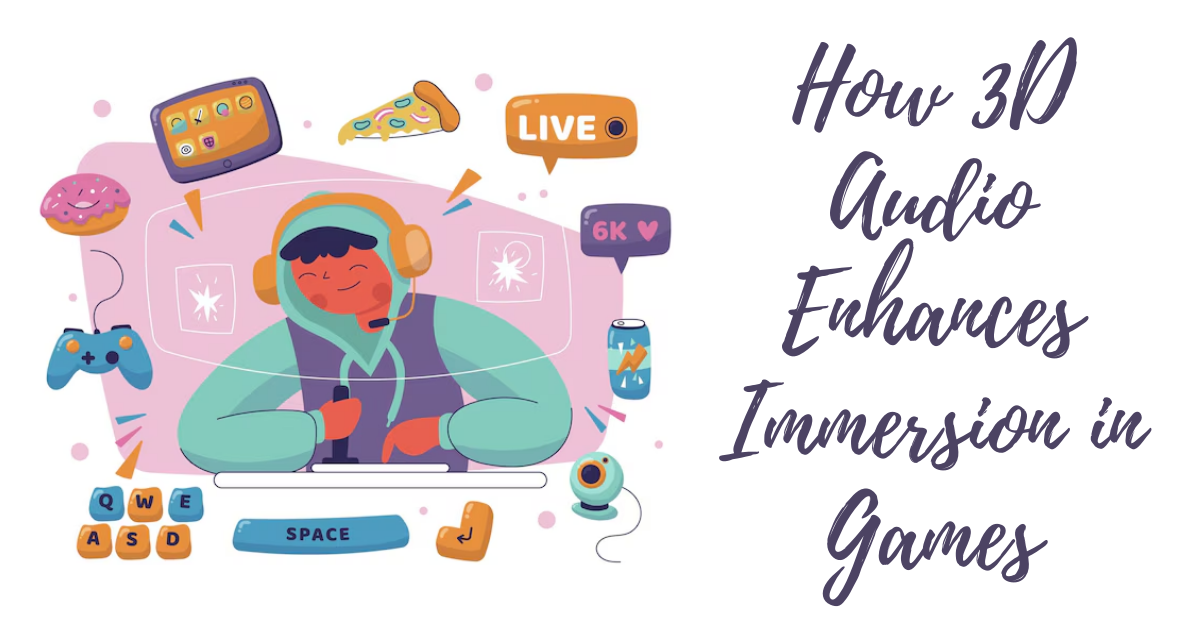In the game world, there’s no buzzword more loved than immersion. When you game, we want you to believe you are in the world. It’s huge whether you’re solving puzzles, or fighting off enemies or going on epic journeys. Visually is still very important for immersion, however, 3D audio is also important to achieve that extra layer of realism which is integral to complete experience of gaming. In this article, we will take a look at 3D audio’s use to transport gamers to a sense of more immersion.
1. What is 3D Audio?
Spatial audio, also known as 3D audio, is an audio made to sound as if the sound is coming from various locations in a virtual 3D space, but it features only two channels (left and right) of channels, like we would have, so it sounds like you’re listening to sounds in real world. Multiple sound sources, consideration of sound characteristics as direction, distance, and depth; in 3D audio.
Key Features of 3D Audio:
Directional Sound:
PlaCing sounds anywhere in the environment gives you a sense of directionality. That means gamers hear sounds coming from their rear, their front, overhead, or from behind them.
Distance and Depth:
This can also give the impact of how the sounds sounds volume will change as the listeners distance from them.
2. 3D Audio Immersion: How It Works
A More Realistic Soundscape
The biggest benefit is that with 3D audio the game world does seem more real. So it allows players to orient themselves naturally around sound sources, as there aren’t any sound sources far off in the distance. If I may use the example of, say, the footsteps behind you, the rustling of leaves from a distant tree — these all heighten that awareness of spatial awareness and make your world gush.
Better Player Awareness
Hearing the enemy approach or a vehicle in games like first person shooter or survival games is many folds more important when you’re in a fast paced game. Using 3D audio players can much more quickly figure out where a sound is coming from, and how far, and will do it much faster instead of just blindly hustling towards the first target in sight.
Enhanced Storytelling
The 3D audio takes our narrative experience up a notch by rendering important audio elements in their appropriate placement on the game’s map. It’s all drawn in fully into the environment. It could include the environmental sounds, the environmental music, anything. The voice acting, everything. Let’s take my favorite example: Hearing, in a fantasy game, the rustle of a wizard’s robes as it steps and staggers towards you, or the far off growl of a dragon in the distance, basking in the sun beneath the bare branches of a small forest, while that is not the rustle of the leaves, but the growl of a creature old is compelling setting and sets the scene, immersing the player in story world and making it more realistic.
3. 3D Audio Technology Explained
With the leap in sound processing, the hardware (gaming headsets) and software, developers are now starting to incorporate spatial sound into games. Both PlayStation 5 and Xbox Series X have built in native 3D audio support but you can use on PC by leveraging software like Dolby Atmos.
It is also often binaural audio techniques employed, to imitate how a human ear hears sound. Wear standard headphones and the methods record sounds the same way your ears do, so the sounds feel like they’re coming from all over the place around you.
Conclusion: The Future of 3D Audio in Gaming
Today, with more games being brought to life than ever before, 3D audio is enhancing these spaces, making the feel of the thing a bit more real than we ever have before. One key reason for this is because 3D audio provides more real world soundscapes to work with, increasing player emotional engagement, situational awareness, and so is a mainstay for modern game design. As you know, technology is constantly advancing and moving forward, and we are only really hoping to have better defined, more immersive sounds that are almost indistinguishable from the one in a game world vs. the actual real world.
With time, 3D audio will certainly become more and more mainstream amongst games and will become increasingly standard across all gaming platforms for added immersion and the whole game playing experience.

